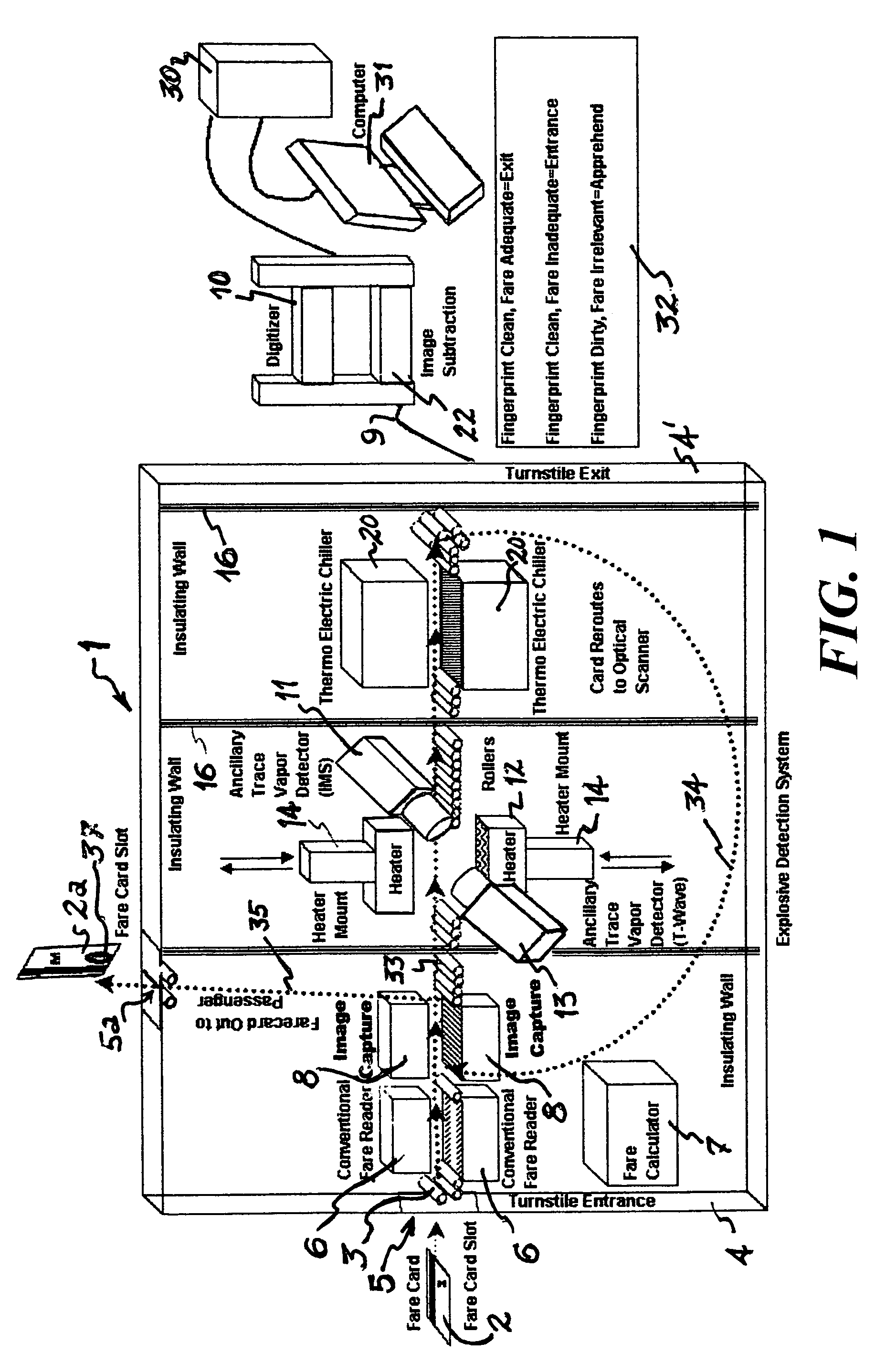Fare card explosive detection system and process
a technology of explosive detection and a card is applied in the field of trace detection and forensic evidence collection, which can solve the problems of dog duty cycle limits, increased risk of dog injury, so as to increase the confidence level, enhance the confidence in explosive signature detection, and ensure the preservation of evidence from an energetic reaction
- Summary
- Abstract
- Description
- Claims
- Application Information
AI Technical Summary
Benefits of technology
Problems solved by technology
Method used
Image
Examples
Embodiment Construction
[0093]Details of the present invention are provided for purpose of illustration and disclosure, but are not intended as exhaustive or limited to the invention in the form disclosed. Many modifications and variations of the method and apparatus disclosed will be apparent to those of ordinary skill in the art.
[0094]The described embodiments are chosen and described in order to best explain the principles of the invention and its practical application to enable others of ordinary skill in the art to understand the invention for various embodiments with various modifications as are suited to the particular use contemplated.
[0095]Referring now to FIG. 1, a schematic is presented to illustrate a system 1 devised for reading a fare card 2, or the like. While described with respect to a fare card 2 presented at a controlled gateway or turnstile, it is to be understood that other cards or passes could be subjected to this same process and system. The schematic is, of course, not to scale and...
PUM
 Login to View More
Login to View More Abstract
Description
Claims
Application Information
 Login to View More
Login to View More - R&D
- Intellectual Property
- Life Sciences
- Materials
- Tech Scout
- Unparalleled Data Quality
- Higher Quality Content
- 60% Fewer Hallucinations
Browse by: Latest US Patents, China's latest patents, Technical Efficacy Thesaurus, Application Domain, Technology Topic, Popular Technical Reports.
© 2025 PatSnap. All rights reserved.Legal|Privacy policy|Modern Slavery Act Transparency Statement|Sitemap|About US| Contact US: help@patsnap.com



